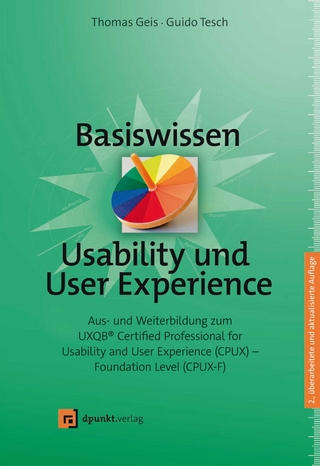
Worth-Focused Design, Book 1
Balance, Integration, and Generosity
Seiten
2020
Morgan & Claypool Publishers (Verlag)
978-1-68173-057-8 (ISBN)
Morgan & Claypool Publishers (Verlag)
978-1-68173-057-8 (ISBN)
This book places a worth focus (Wo-Fo) in the context of design progressions that are Balanced, Integrated, and Generous (BIG). BIG and Wo-Fo are symbiotic. Worth provides a focus for generosity. Effective Wo-Fo needs BIG practices.
This book develops an appropriate common language for truly interdisciplinary teams involved in design.
Design now has many meanings. For some, it is the creation of value. For others, it is the conception and creation of artefacts. For still others, it is fitting things to people. These differences reflect disciplinary values that both overlap and diverge. All involve artefacts: we always design things. Each definition considers people and purpose in some way. Each handles evaluation differently, measuring against aesthetics, craft standards, specifications, sales, usage experiences, or usage outcomes. There are both merits and risks in these differences, without an appropriate balance. Poor balance can result from professions claiming the centre of design for their discipline, marginalising others. Process can also cause imbalance when allocating resources to scheduled stages. Balance is promoted by replacing power centres with power sharing, and divisive processes with integrative progressions. A focus on worth guides design towards worthwhile experiences and outcomes that generously exceed expectations.
This book places worth focus (Wo-Fo) into the context of design progressions that are balanced, integrated, and generous (BIG). BIG and Wo-Fo are symbiotic. Worth provides a focus for generosity. Effective Wo-Fo needs BIG practices. The companion book Worth-Focused Design, Book 2: Approaches, Contexts, and Case Studies (Cockton, 2020b) relates the concept of worth to experiences and outcomes based on a number of practical case studies.
This book develops an appropriate common language for truly interdisciplinary teams involved in design.
Design now has many meanings. For some, it is the creation of value. For others, it is the conception and creation of artefacts. For still others, it is fitting things to people. These differences reflect disciplinary values that both overlap and diverge. All involve artefacts: we always design things. Each definition considers people and purpose in some way. Each handles evaluation differently, measuring against aesthetics, craft standards, specifications, sales, usage experiences, or usage outcomes. There are both merits and risks in these differences, without an appropriate balance. Poor balance can result from professions claiming the centre of design for their discipline, marginalising others. Process can also cause imbalance when allocating resources to scheduled stages. Balance is promoted by replacing power centres with power sharing, and divisive processes with integrative progressions. A focus on worth guides design towards worthwhile experiences and outcomes that generously exceed expectations.
This book places worth focus (Wo-Fo) into the context of design progressions that are balanced, integrated, and generous (BIG). BIG and Wo-Fo are symbiotic. Worth provides a focus for generosity. Effective Wo-Fo needs BIG practices. The companion book Worth-Focused Design, Book 2: Approaches, Contexts, and Case Studies (Cockton, 2020b) relates the concept of worth to experiences and outcomes based on a number of practical case studies.
University of Sunderland
Preface
Acknowledgments
Three Years In: A Design Practice Fiction
The Realities of Creative Design Practice
We Need to Talk About Process: A Design Practice Research Fiction
Status not Process: Abstract Design Situations as Snapshots of Design Work
Tracking BIG Creative Design Practice
Enabling Creative Critical Design Practices
Glossary and Abbreviations
References
Author Biography
| Erscheinungsdatum | 10.05.2020 |
|---|---|
| Reihe/Serie | Synthesis Lectures on Human-Centered Informatics |
| Verlagsort | San Rafael |
| Sprache | englisch |
| Maße | 191 x 235 mm |
| Themenwelt | Mathematik / Informatik ► Informatik ► Grafik / Design |
| Informatik ► Software Entwicklung ► User Interfaces (HCI) | |
| ISBN-10 | 1-68173-057-X / 168173057X |
| ISBN-13 | 978-1-68173-057-8 / 9781681730578 |
| Zustand | Neuware |
| Haben Sie eine Frage zum Produkt? |
Mehr entdecken
aus dem Bereich
aus dem Bereich
Aus- und Weiterbildung zum UXQB® Certified Professional for Usability …
Buch | Hardcover (2023)
dpunkt (Verlag)
36,90 €
Aus- und Weiterbildung nach iSAQB-Standard zum Certified Professional …
Buch | Hardcover (2023)
dpunkt Verlag
34,90 €
Wissensverarbeitung - Neuronale Netze
Buch | Hardcover (2023)
Carl Hanser (Verlag)
34,99 €


